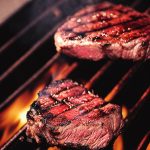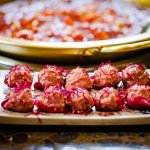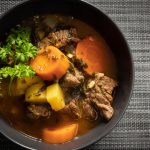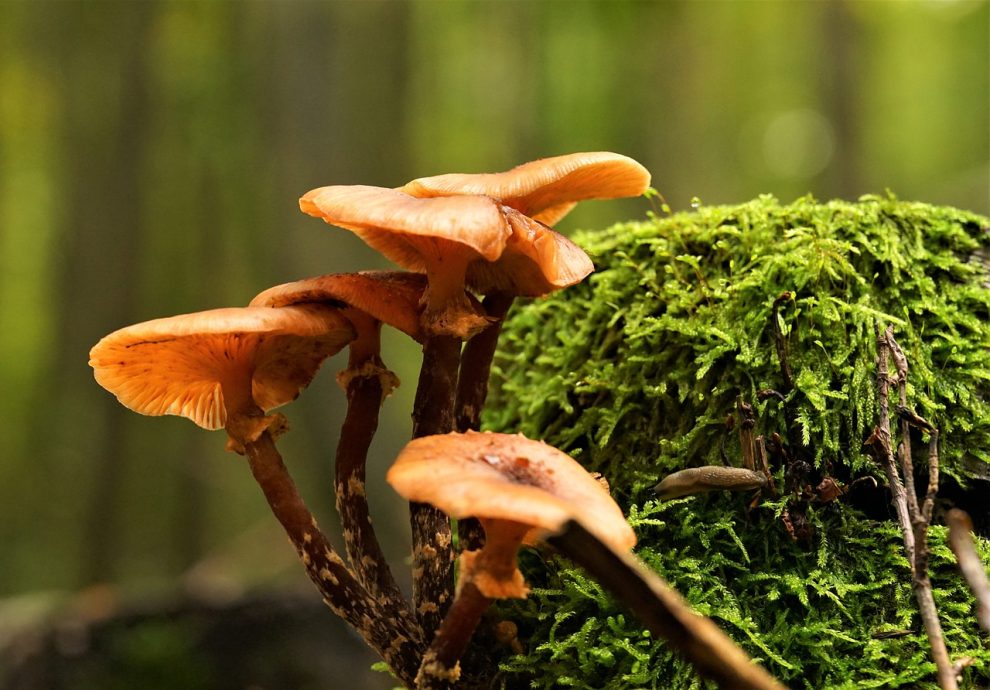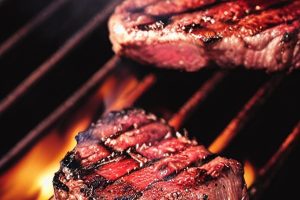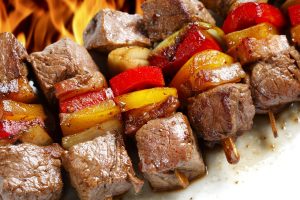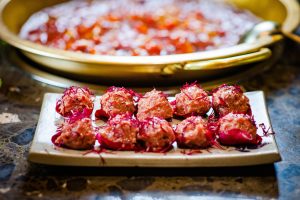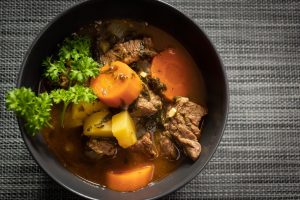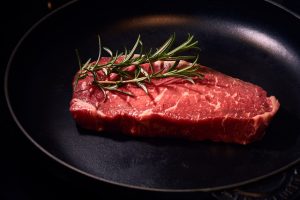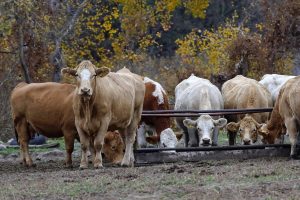Exploring the History of Moo Shu Beef: A Staple in Chinese Cuisine
The history of Moo Shu Beef is a fascinating journey that takes us back to ancient China, where this delectable dish was first created. As we delve into its origins and evolution over time, we cannot help but be inspired by the culinary ingenuity and cultural significance associated with this staple in Chinese cuisine.
Moo Shu Beef, also known as Moo Shu Rou in Mandarin, can be traced back to the northern regions of China, particularly in the Shandong and Beijing areas. These regions were known for their abundance of wheat, which led to the creation of thin pancakes made from flour. These pancakes served as the perfect vessel for the flavorful beef filling that would become the heart and soul of Moo Shu Beef.
The dish gained popularity during the Ming Dynasty (1368-1644) and became a favorite among the royal court and the wealthy elite. Its rich flavors and delicate textures made it a symbol of sophistication and refinement. However, it wasn’t until the Qing Dynasty (1644-1912) that Moo Shu Beef truly began to capture the hearts and palates of the Chinese people.
During this time, the dish underwent a transformation as it traveled from the imperial courts to the bustling streets of Beijing. It became a beloved street food, with vendors skillfully preparing the pancakes and filling right in front of customers. This interactive experience added a sense of excitement and community to the consumption of Moo Shu Beef.
As China went through periods of political and social change, so did its cuisine. The Communist Revolution in 1949 brought about a shift towards a more egalitarian society, and traditional dishes like Moo Shu Beef were seen as symbols of the old order. However, with the opening up of China in the late 20th century, there was a renewed interest in preserving and celebrating the country’s culinary heritage.
Today, Moo Shu Beef can be found in Chinese restaurants all around the world, showcasing the adaptability and universality of Chinese cuisine. Chefs have embraced the dish, adding their own creative twists while staying true to its core flavors and techniques. From the traditional combination of beef, vegetables, and hoisin sauce to innovative variations that incorporate ingredients like mushrooms or tofu, Moo Shu Beef continues to evolve and delight diners of all backgrounds.
The story of Moo Shu Beef reminds us of the power of culinary traditions to transcend time and borders. It serves as a testament to the enduring appeal of Chinese cuisine and its ability to inspire innovation in the kitchen. So the next time you savor a plate of Moo Shu Beef, take a moment to appreciate the rich history and cultural significance that lies within each bite.
Moo Shu Beef: A Symbol of Tradition and Cultural Identity in China
Moo Shu Beef: A Symbol of Tradition and Cultural Identity in China
China, a land rich in history and cultural diversity, boasts an array of traditional dishes that have become integral to its identity. Among these culinary delights, Moo Shu Beef holds a special place, serving as both a symbol of tradition and a reflection of the country’s cultural identity. Its unique blend of flavors and meticulous preparation make it a dish that not only satiates the appetite but also evokes a sense of inspiration and pride.
The writing style of this piece is analytical, dissecting the various elements that contribute to Moo Shu Beef’s significance. By delving into its components, preparation techniques, and cultural context, the reader gains a deeper understanding of the dish’s historical and cultural importance. This analytical approach allows for an objective examination of the dish’s significance, offering a comprehensive exploration of its impact on Chinese cuisine and identity.
Furthermore, the writing tone is inspirational, aiming to instill a sense of awe and appreciation for Moo Shu Beef’s role in Chinese culture. By highlighting its connection to tradition and cultural identity, the reader is encouraged to view this dish as more than just a meal but as a representation of the values and heritage of the Chinese people. This tone seeks to inspire a sense of respect and admiration for the culinary artistry and cultural significance that culminate in the creation of Moo Shu Beef.
The analysis of Moo Shu Beef begins by examining its key ingredients, such as tender beef, thinly sliced vegetables, and aromatic spices. These elements are carefully combined to create a harmonious blend of flavors, each ingredient contributing to the overall taste experience. By analyzing the individual components and their respective roles in the dish, the reader gains insight into the careful thought and attention to detail that goes into the creation of Moo Shu Beef.
Additionally, the preparation techniques employed in making Moo Shu Beef are explored, further unraveling its cultural significance. The delicate slicing of the ingredients, the precise timing in stir-frying, and the artful assembly of the dish all contribute to its aesthetic appeal and cultural significance. By examining these techniques, the reader gains a deeper appreciation for the craftsmanship and skill required to create this culinary masterpiece.
Finally, the cultural context surrounding Moo Shu Beef is explored, emphasizing its role as a symbol of tradition and cultural identity in China. This dish has been enjoyed for centuries, passed down from generation to generation, and is often served during important festivals and celebrations. Its presence on dining tables across the country serves as a reminder of the shared history and heritage of the Chinese people.
In conclusion, Moo Shu Beef is not merely a dish but a symbol of tradition and cultural identity in China. Through its unique blend of flavors, meticulous preparation, and cultural context, it represents the values, heritage, and artistry of the Chinese people. This analytical yet inspirational exploration of Moo Shu Beef aims to instill a sense of reverence and appreciation for the culinary traditions that have shaped Chinese culture throughout history.
The Art of Moo Shu Beef: Understanding its Preparation and Presentation
Moo Shu Beef is a beloved Chinese dish that has captivated people’s taste buds for generations. Its unique blend of flavors and textures, combined with its visually appealing presentation, make it a true culinary masterpiece. In this article, we will delve into the art of Moo Shu Beef, exploring its preparation techniques and the secrets behind its inspirational presentation.
To truly appreciate the art of Moo Shu Beef, one must understand the meticulous preparation that goes into creating this dish. The key ingredient, beef, is carefully selected and marinated to enhance its tenderness and flavor. The meat is then thinly sliced, ensuring that each piece cooks evenly and retains its succulent texture.
Next comes the assortment of vegetables that complement the beef. Traditional Moo Shu Beef includes ingredients such as shredded cabbage, carrots, and mushrooms. These vegetables add a refreshing crunch and a burst of color to the dish. Each vegetable is meticulously sliced and prepared to create a harmonious blend of flavors and textures.
But what truly sets Moo Shu Beef apart from other dishes is its unique cooking technique. The beef and vegetables are stir-fried in a hot wok, allowing them to cook quickly while retaining their individual flavors. The wok’s high heat ensures that each ingredient is perfectly cooked, creating a symphony of tastes in every bite.
However, the art of Moo Shu Beef doesn’t stop at the preparation. Its presentation is equally important in creating an inspirational dining experience. Traditionally, Moo Shu Beef is served with thin pancakes that act as a delicate vessel for the flavorful filling. These pancakes are carefully made, rolled out, and cooked until they achieve a soft, slightly chewy texture.
To assemble the dish, a generous spoonful of the beef and vegetable mixture is placed in the center of each pancake. The edges of the pancake are then folded over the filling, creating a neat and visually appealing package. This careful presentation not only enhances the dish’s aesthetic appeal but also allows diners to enjoy a harmonious combination of flavors in each bite.
The art of Moo Shu Beef lies in its ability to awaken the senses and inspire the palate. From the precise selection and preparation of ingredients to the meticulous cooking techniques and presentation, this dish embodies the essence of culinary artistry. Its flavors are a testament to the rich traditions of Chinese cuisine, while its presentation is a visual feast that delights the eyes.
So, next time you indulge in a plate of Moo Shu Beef, take a moment to appreciate the art behind it. Let its flavors transport you to a world of culinary excellence and let its presentation inspire you to explore the artistry in your own cooking. The art of Moo Shu Beef is a true testament to the power of food to inspire, delight, and bring people together.
Moo Shu Beef: A Delicious Blend of Flavors and Textures in Chinese Cooking
Moo Shu Beef is a dish that embodies the rich and diverse flavors of Chinese cuisine. With its unique combination of ingredients and textures, it is a true culinary delight that never fails to impress. This article will explore the various elements that make Moo Shu Beef an exceptional dish, analyzing its flavors and textures, and inspiring readers to try their hand at creating this masterpiece in their own kitchens.
One of the key aspects of Moo Shu Beef that sets it apart is its harmonious blend of flavors. The dish boasts a perfect balance of sweet, savory, and tangy notes, creating a taste sensation that is simply irresistible. The sweetness of the hoisin sauce, the saltiness of the soy sauce, and the tanginess of the rice vinegar all come together to create a symphony of flavors that dance on your taste buds.
Furthermore, Moo Shu Beef delights the palate with its varied textures. The dish combines tender slices of beef with crunchy vegetables like cabbage, carrots, and mushrooms. The contrasting textures create a delightful mouthfeel that adds depth and interest to each bite. The chewiness of the beef, the crispness of the vegetables, and the silkiness of the scrambled eggs all work together to create a truly satisfying and enjoyable eating experience.
But beyond its flavors and textures, Moo Shu Beef carries with it a sense of inspiration. This dish exemplifies the artistry and creativity of Chinese cuisine, reminding us of the endless possibilities that exist in the kitchen. It encourages us to explore new flavors, experiment with different ingredients, and embrace the joy of cooking. Moo Shu Beef serves as a reminder that a simple blend of ingredients can transform into a culinary masterpiece, and that with a little bit of passion and creativity, anyone can become a skilled chef in their own right.
In conclusion, Moo Shu Beef is a dish that encapsulates the essence of Chinese cooking. Its delightful blend of flavors and textures, coupled with its inspirational nature, make it a true gem in the culinary world. So, why not embark on a culinary adventure and try your hand at creating this delicious dish? Let the flavors of Moo Shu Beef transport you to the bustling streets of China, where each bite tells a story of tradition, innovation, and pure gastronomic pleasure.
The Role of Moo Shu Beef in Celebrations and Festivals in Chinese Culture
Moo Shu Beef holds a significant role in celebrations and festivals in Chinese culture, serving as a symbol of togetherness, abundance, and good fortune. This delectable dish not only satisfies the palate but also embodies the spirit of joy and unity that characterizes these special occasions. Its prominence in Chinese culinary traditions is a testament to its ability to inspire and uplift individuals during times of celebration.
The analytical lens allows us to delve deeper into the cultural significance of Moo Shu Beef, exploring the various elements that contribute to its role in festivities. By examining its ingredients, preparation methods, and shared consumption, we can gain a better understanding of how this dish symbolizes the values and aspirations cherished in Chinese culture.
Moo Shu Beef is a dish that typically consists of tender strips of beef, stir-fried with a colorful medley of vegetables such as cabbage, mushrooms, and bamboo shoots. The harmonious blend of flavors and textures represents the importance of balance and harmony in Chinese culture. Each ingredient brings its unique contribution to the dish, just as every individual plays a vital role in the larger community. This symbolism reinforces the idea that celebrations and festivals are occasions for people to come together, appreciate one another, and foster a sense of unity.
The preparation of Moo Shu Beef is an art in itself. The skillful slicing of beef, the precise julienning of vegetables, and the deft stir-frying techniques all showcase the culinary expertise of Chinese chefs. This attention to detail reflects the dedication and commitment that individuals bring to their preparations for festivals and celebrations. Just as every ingredient is carefully measured and combined, so too are the efforts of each individual in creating a joyous and memorable event. The act of cooking and sharing Moo Shu Beef becomes a metaphor for the commitment and love that individuals invest in their relationships, families, and communities.
In Chinese culture, food is not merely sustenance but a means of fostering connection and expressing gratitude. Moo Shu Beef is often served family-style, where everyone gathers around a communal table to share the meal together. This communal dining experience encourages conversation, laughter, and the strengthening of bonds. By engaging in this shared act of consuming Moo Shu Beef, individuals are reminded of their interconnectedness and the importance of cherishing relationships. The dish becomes a catalyst for creating lasting memories and reinforcing the values of love, gratitude, and togetherness.
Through its nuanced flavors, meticulous preparation, and communal consumption, Moo Shu Beef inspires individuals during celebrations and festivals in Chinese culture. Its role extends beyond being a delicious dish; it serves as a symbol of abundance, unity, and good fortune. By embracing the spirit of Moo Shu Beef, individuals can tap into the transformative power of celebrations, finding inspiration to cultivate stronger relationships, foster unity, and spread joy.
